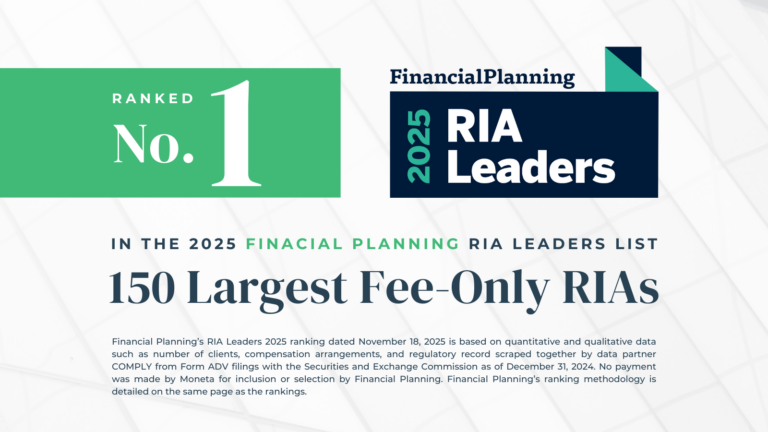Today’s teenagers face tremendous pressure. Before the first bell rings freshman year of high school, many begin preparing for college admissions time — joining clubs, playing competitive sports, and performing community service. They take Honors and Advanced Placement courses to demonstrate ambition, get tutoring and test-prep to boost their scores, and work part-time jobs to build their resumes. What’s the goal? Acceptance into the most prestigious schools to set themselves up for future success.
According to Aly Beaumont, Founder and President of Admissions Village, a college guidance resource in Wilton, Connecticut,
“There are ridiculous expectations placed upon young people today, and parents should not be afraid to let their kids off the hamster wheel.”
Our children are under tremendous stress, and many need time before they are ready to face college.
Would your child benefit from taking a gap year?

A Gap Year is NOT for Time Off
The Gap Year Association defines a gap year as “an intentional period of time devoted to personal growth and exploration through experiential learning opportunities.” During the year, many students participate in a combination of activities, from community service to part-time work, travel the world, and explore their passions. A gap year allows students extra time to mature, expand their world view, and consider what they want to do with their lives.
As Holly Bull, President & Counselor for the Center for Interim Programs, points out, “A gap year is not a year off. You’re on – stepping into things that are so different. It can be a very practical move because it’s an opportunity to test the waters and decide what it is you want to study.” A gap year is for self-discovery, and Holly suggests that anyone heading to college should consider it as an option.
Malia Obama Makes the Gap Year Popular
In 1980, when Holly’s father, Cornelius Bull, founded their firm, it was the first independent gap year counseling organization in the United States. At the time, gap years were in full swing in the UK and Europe but unconventional in the U.S. However, in the fall of 2017, First Daughter Malia Obama took a gap year before enrolling at Harvard. She trekked through Bolivia and Peru, lived with a host family, and interned in the film industry. Malia’s adventures, with her parents’ support, raised awareness of the benefits and many possibilities of a gap year, helping to make the gap year an acceptable and rewarding option.
A Resourceful Student Pivots
In the fall of 2019, Justin Silver* received his Early Decision acceptance to Emory University. Although he planned to go straight to college after graduation, he re-evaluated his options when the pandemic struck. His mother, Eileen*, a public-school math teacher, felt there were too many unknowns due to COVID, including the potential disadvantages of remote learning and fewer opportunities to get involved on campus. Justin and his parents agreed he should explore a gap year, which he would be responsible for planning. He structured the year into three segments. During the first two months, he and his friends hiked the lengthy Virginia portion of the Appalachian Trail, taking in the beauty of the Shenandoah Mountains. When he returned, Justin took a part-time job to earn money and to gain work experience. After that, he volunteered through Worldwide Opportunities on Organic Farms (WWOOF), a nonprofit organization that connects volunteers with organic farmers, and became part of a welcoming community in Moab, Utah. Eileen believes Justin’s gap year experience provided many emotional benefits, including helping him to become more self-reliant, and made him a stronger candidate for summer jobs during college. He is now completing his final year as a pre-med student and plans to take another gap year before starting medical school.
A Younger Student Becomes a Leader
Following in his brother Justin’s footsteps, Jake Silver*, now a sophomore studying chemical engineering at the University of Rochester, also took a gap year before college. Since he was young for his grade, his parents did not see a downside to giving him extra time to experience the world. During his gap year, Jake went camping and hiking out west and in Patagonia (through High Mountain Institute). He lived in the mountains of Guatemala with a local family, immersing himself in the culture and improving his fluency in Spanish. Eileen believes Jake gained a tremendous amount of confidence and now holds leadership positions at school, including serving as a Teaching Assistant in chemistry, because of the strides he made during his gap year.
A History Student Changes Course
After her sophomore year at Montclair State, Josephine Good*, a history major, took a leave of absence to explore becoming a nurse. She earned a medical assistant certificate and worked in a radiologist’s office and then for a gynecological practice. She enjoys interacting with patients and has since returned to school to pursue her nursing degree.
Holly Bull explains that a gap year during college also provides clarity. She, too, took a break after her sophomore year, as well as a year before college. It only took three months assisting with aquaculture research in Hawaii for her to realize she didn’t have the patience for research, which was helpful to know before potentially majoring in that field in college.
A Lacrosse Player Holds Out for Division-1
Some varsity athletes enroll in post-graduate (PG) programs, boarding schools that specialize in sports training and college placement as their gap year. Aly Beaumont says these students are looking for a second chance to find a college where they can play their sport or to be recruited into a better program than the ones that initially offered them positions. A PG year allows athletes to improve in their sport, better their academic standing, and potentially grow stronger. One student she worked with, a lacrosse player who had been selected by only one Division-3 school, opted to go PG and try again. Although this decision worked well for him because he ultimately was recruited into a D-1 school, taking a PG year for sports training is very dependent on having realistic expectations of a student’s potential athletic abilities.

Will a Gap Year Help Your Child Get into a Better School?
Aly warns that, “Some parents believe a gap year will improve their child’s profile; but for most students, it’s simply not enough time.” She typically recommends that students thinking about a gap year apply to college as they normally would, during the fall of their senior year, then ask the college or university they plan to attend for a deferral. “Waiting until after the gap year to apply can potentially cause problems. A teacher from whom they were planning to ask for a reference may leave the school, while other application logistics, such as getting their transcripts sent, can become more difficult.”
Why Students Should Consider a Gap Year
Slightly less than 40% of Americans who start college don’t finish, and many students take more than eight years to complete their degree.1 Gap year students tend to have higher GPAs and complete their degrees in less time, on average, than their non-gap year peers.2
Eileen Silver witnessed the benefits of a gap year for her two boys as well as for her students and believes there is no downside to taking a gap year. Holly Bull largely agrees, explaining that, “After a gap year, students tend to be more mature, self-confident, and focused. They have a clearer direction and become leaders on campus.” However, she warns that a gap year only works if the student is motivated to do it.
What are the Opportunities and Costs Associated with Taking a Gap Year?
There are many ways students can learn and grow during their gap year. The Center for Interim Programs offers students and their families a complimentary 90-minute phone consultation to discuss potential opportunities. Holly says, “If after seeing what’s available, a student still says they want to go straight to college, they own it — but it’s good for them to see that they have choices.”
The cost of a gap year varies, depending upon what your child chooses to do. Many kids get jobs or internships as a way to explore a field or build their credentials/resume. Other programs can cost as much as a year of college, especially when travel is involved. However, if the program offers college credit, you may be able to utilize a 529 college savings plan to cover some of the costs.
What do Colleges Think about a Gap Year?
Today, many prestigious schools encourage students to take a gap year. Harvard College attributes its high graduation rate, in part, to the academic break many students take before college. Middlebury College in Vermont prides itself on a spirit of adventure and supports students who want to pursue an enriching experience before enrolling. Colorado College offers students opportunities to study abroad, spend a semester at sea, or get an internship in Washington, D.C. before enrolling. And Princeton University promotes a tuition-free “bridge year” cultural immersion program open to all newly admitted first-year students. You can find information about a school’s gap year policy and deferral deadlines on their websites.
For many students, a gap year provides an opportunity to learn and grow, provided they engage in something enriching and productive. If you think your child might benefit from studying abroad, pursuing an internship, volunteering, working part-time, or exploring their passion before continuing on to higher learning, a gap year may be right for them.
Sample Gap Year Programs
AmeriCorps (volunteer organization)
Campus Career Center (entry level jobs)
High Mountain Institute (fee)
Tivnu: Building Justice (fee)
Where There Be Dragons (fee)
Worldwide Opportunities on Organic Farms (WWOOF) (volunteer organization)
Gap Year Resources
1 Hanson, Melanie “College Dropout Rates” EducationData.org, August 16, 2024
2 Gap Year Alumni Survey 2020, Americorps National Civilian Community Corps
*Name changed for privacy.
© 2024 Advisory services offered by Moneta Group Investment Advisors, LLC, (“MGIA”) an investment adviser registered with the Securities and Exchange Commission (“SEC”). MGIA is a wholly owned subsidiary of Moneta Group, LLC. Registration as an investment adviser does not imply a certain level of skill or training. The information contained herein is for informational purposes only, is not intended to be comprehensive or exclusive, and is based on materials deemed reliable, but the accuracy of which has not been verified.
Trademarks and copyrights of materials referenced herein are the property of their respective owners. Index returns reflect total return, assuming reinvestment of dividends and interest. The returns do not reflect the effect of taxes and/or fees that an investor would incur. Examples contained herein are for illustrative purposes only based on generic assumptions. Given the dynamic nature of the subject matter and the environment in which this communication was written, the information contained herein is subject to change. This is not an offer to sell or buy securities, nor does it represent any specific recommendation. You should consult with an appropriately credentialed professional before making any financial, investment, tax or legal decision. An index is an unmanaged portfolio of specified securities and does not reflect any initial or ongoing expenses nor can it be invested in directly. Past performance is not indicative of future returns. All investments are subject to a risk of loss. Diversification and strategic asset allocation do not assure profit or protect against loss in declining markets. These materials do not take into consideration your personal circumstances, financial or otherwise.







